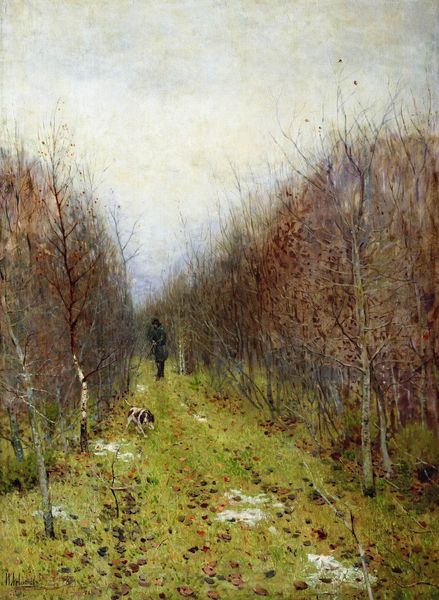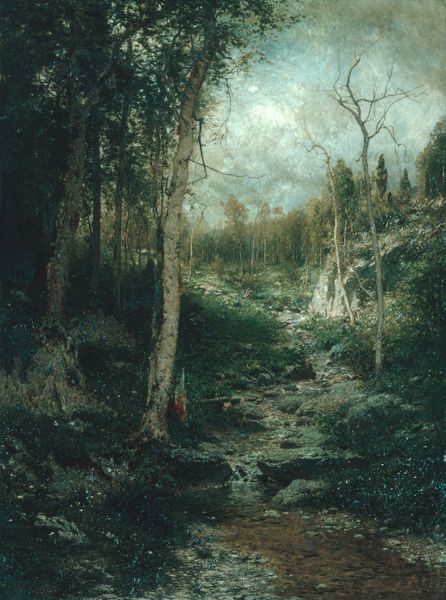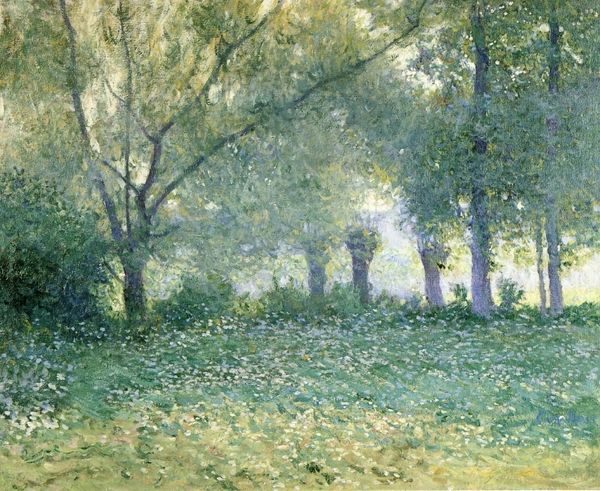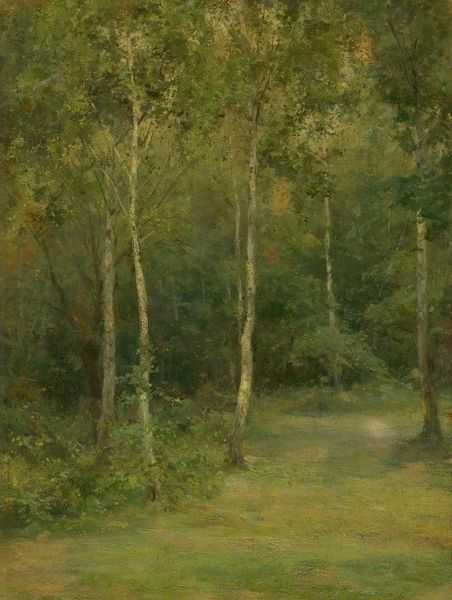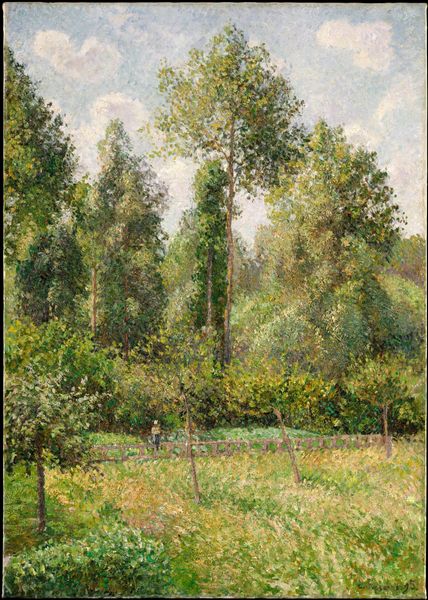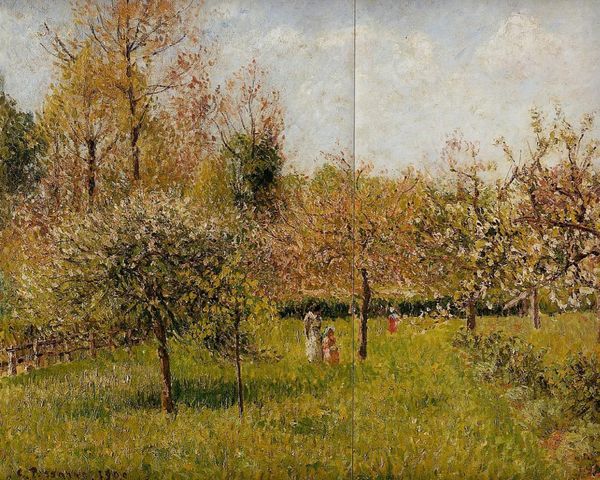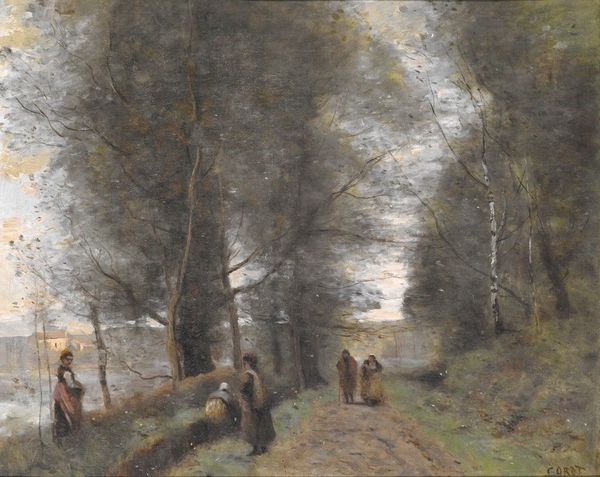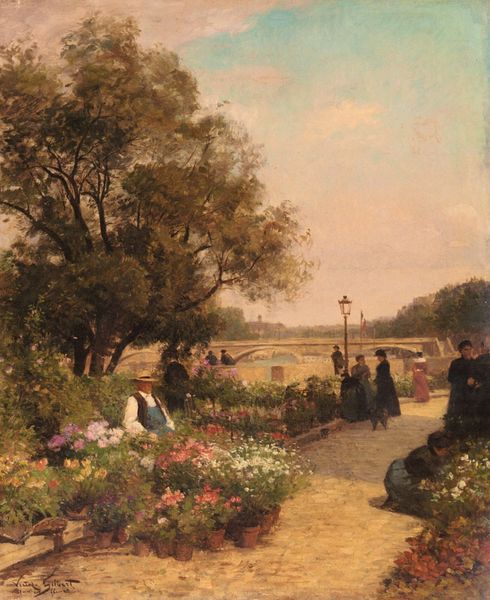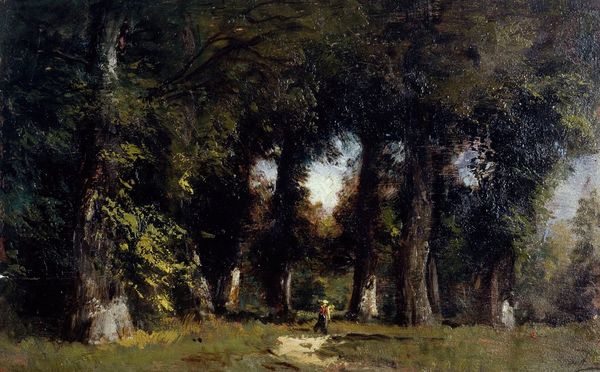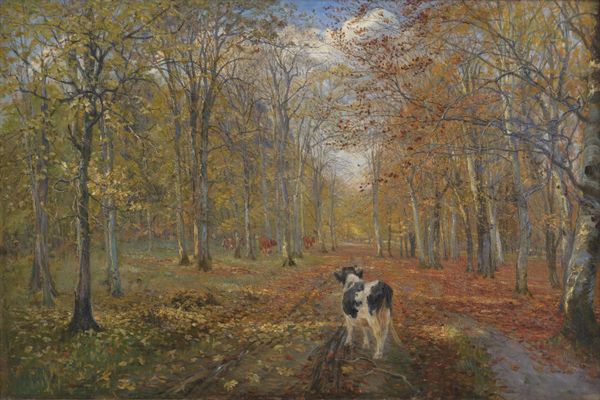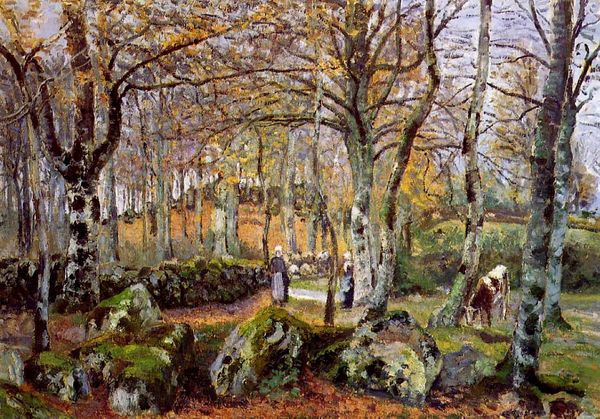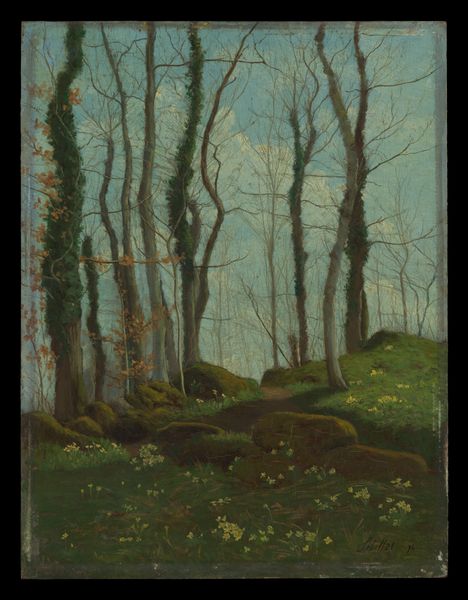
Copyright: Public domain
Curator: This is "Forårsbøgeskov" painted around 1900 by Hans Andersen Brendekilde, depicting a beech forest in springtime. Editor: The light filtering through those pale tree trunks—it gives such an airy, dreamlike feeling, doesn’t it? Almost translucent. Curator: It’s interesting to consider this work within the broader context of turn-of-the-century Danish art. Brendekilde, emerging from a rural, working-class background, often depicted scenes of peasant life, filtered here through a soft lens. It is possible to observe, particularly regarding the representation of the female figure, Brendekilde's construction and perpetuation of rural female roles within this idyllic scene. How does it challenge, or reinforce, the narrative of the hardworking rural woman in art of that time? Editor: The use of color, the light green against the neutral grays and browns of the trees—the painterly quality of the ground and trees really gives texture. It also subtly disrupts the composition, creating a tension between realistic depiction and abstraction. Curator: Certainly. Brendekilde was interested in plein-air painting, but this isn’t just about capturing natural light; it's also a narrative of rural experience at the time, capturing, perhaps inadvertently, social codes and the silent stories of the subjects as they exist in relation to the dominant narrative of progress and industrialization. How do such genre paintings play into constructions of national identity? Editor: What intrigues me is the structural integrity despite the delicate brushwork, the foreground so full, and leading to a point deep in the woods, giving this scene great spatial depth. Curator: These artworks operate within a specific visual language, often romanticizing nature while embedding unspoken social scripts. In terms of thinking about eco-criticism, what could we infer from the painting's historical depiction of nature and human intervention in the landscape? Editor: Viewing Brendekilde’s woodland is visually a respite of harmonic balance and peace that invites you in. Curator: The artist’s composition asks interesting questions about our relationship to natural spaces and representations of pastoral idylls, while questioning the values attached to simple labor.
Comments
No comments
Be the first to comment and join the conversation on the ultimate creative platform.
